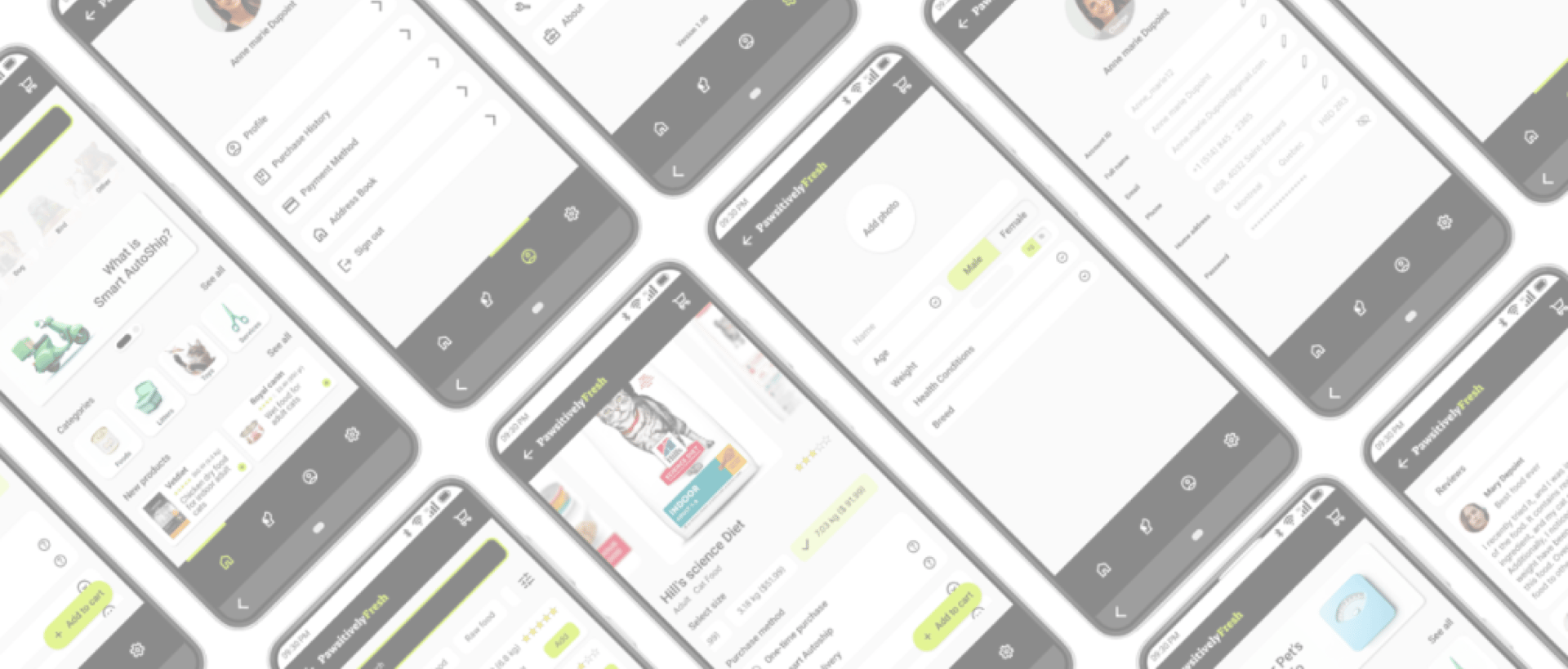


Completed (done as part of the Google UX Design Professional Certificate).
State
Goal
Improve personalization in pet food auto-delivery services.
Target Users
Busy, health-conscious pet owners
My Role
UX designer and researcher
Activities
Interview, empathy map, usability test, prototyping
Platform
Mobile (Android)
Tools
Figma, Miro, Zoom














Industry
Petcare / Subscription services


Context & Problem Space
A pet food subscription app that uses AI to personalize delivery schedules and portion sizes based on each pet’s unique needs.
What is PawsitivelyFresh?
New and experienced pet owners alike often face uncertainty around how much and how often to feed their pets—especially when considering factors like age, weight, breed, and specific health conditions. The key pain points identified are outlined below; the following section explains the research process that led to these findings.
What is the problem space?


Confusion about portion sizing


Lack of pet-level personalization


Inconsistent delivery timing
Most pet foods offer generic feeding tables that don’t account for individual pet profiles or medical needs, leaving owners unsure about the right amount to serve.
Multi-pet households often juggle different dietary needs, health issues, and feeding behaviors, but most platforms treat them as one-size-fits-all.
Without smart scheduling, users frequently experience overstocking or running out of food at critical times.
Research & Discovery
To design a more personalized and reliable pet food subscription experience, I began by finding real user needs through interviews with five pet owners. I explored how they currently feed their pets, the challenges they face with portion control, scheduling, and personalization, and what makes them feel confident in a service. I then translated these insights into empathy maps, a persona, and a user journey map, laying a strong foundation for user-centered design decisions.
After conducting five user interviews, I synthesized the qualitative data using an affinity mapping approach. This method helped me surface recurring patterns, motivations, pain points, and behavioral nuances across diverse pet owners. By clustering related observations, I was able to identify key themes that informed the product direction and the formation of personas.
Below is the resulting affinity map, which captures the voices and behaviors of our target users and lays the groundwork for design decisions moving forward.
1- Affinity mapping
2- Empathy map

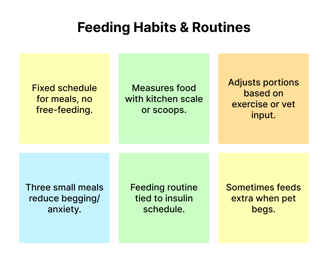

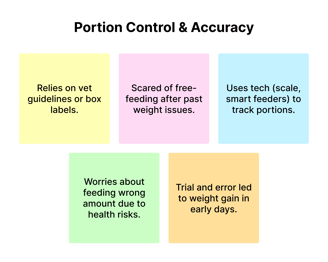
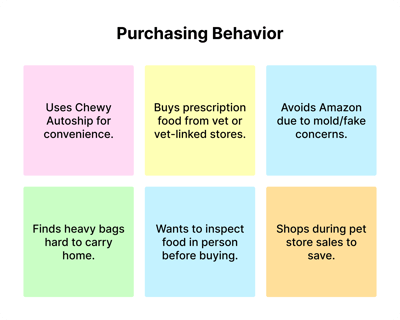

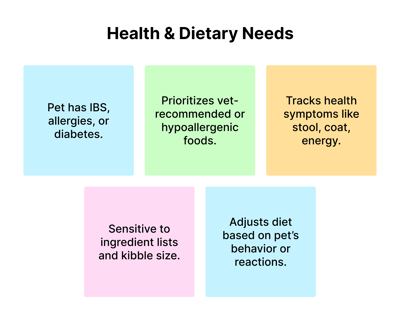

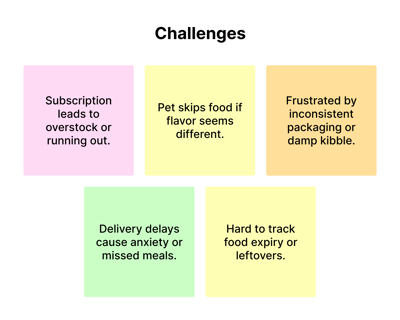

To visualize user needs, frustrations, and behaviors, and uncover insights that guide human-centered design decisions, I created empathy maps for the interviewees. I’ve shared one of them here to illustrate how these findings shaped the next stages of this project.
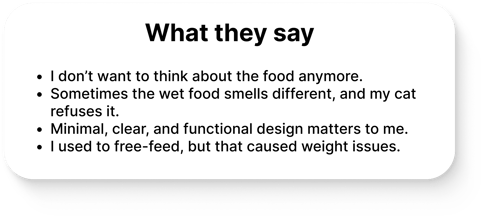

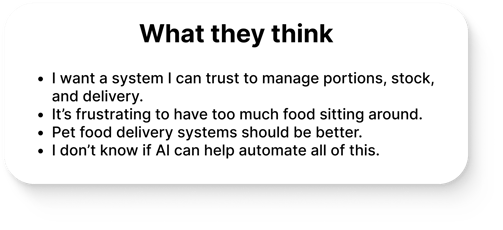



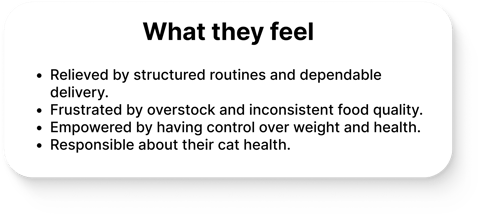

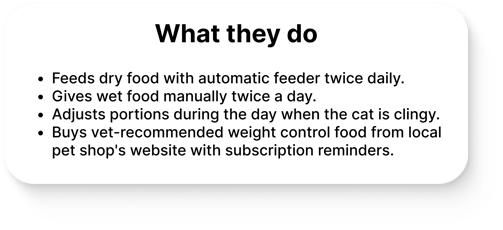

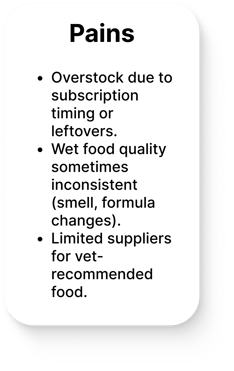

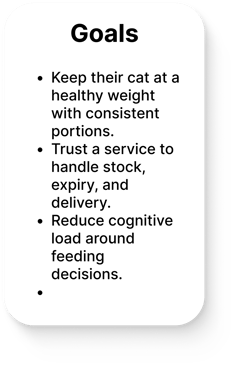

3- Personas
Based on insights gathered from user interviews, I identified three distinct personas that represent key behavioral patterns, motivations, and pain points. These personas helped me align design decisions with real user needs.
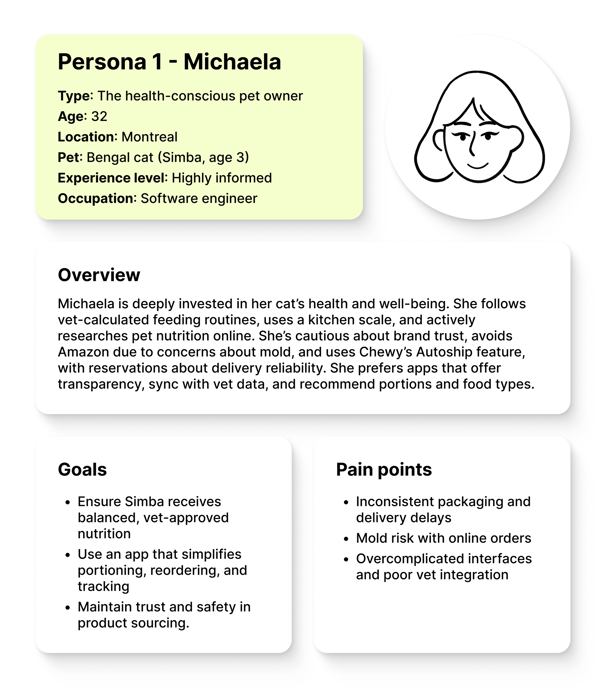

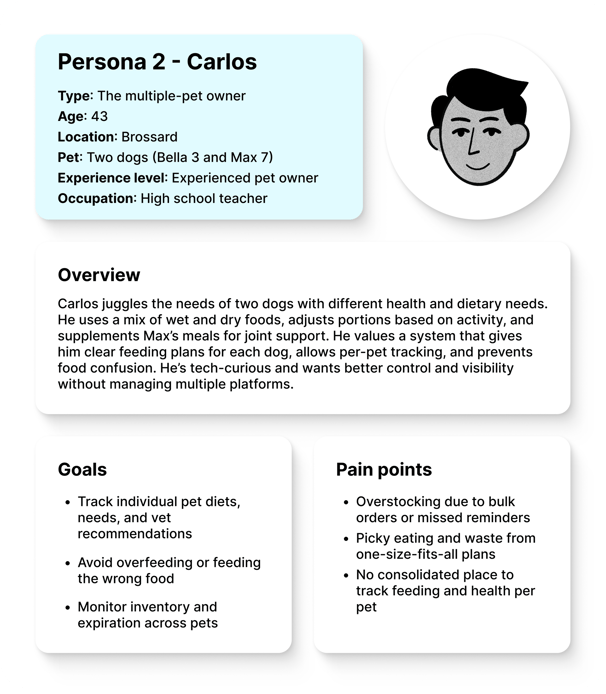

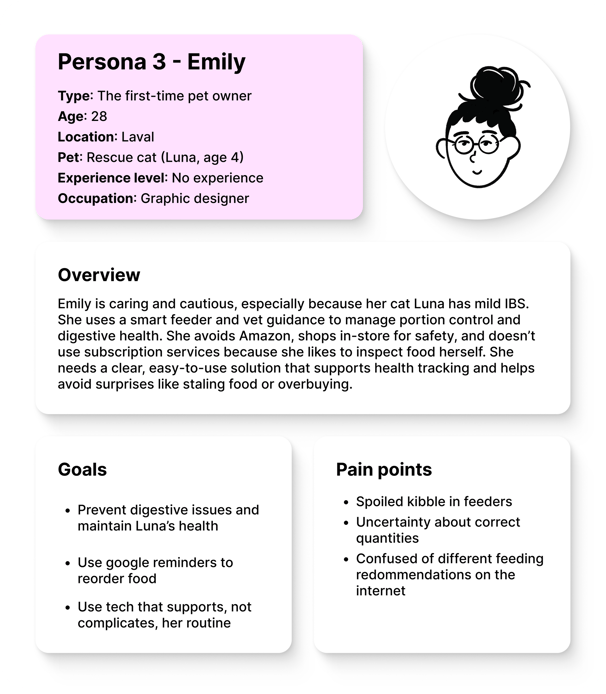

4- User journey map (as-is)
To understand how users currently manage their pet feeding routines, I created as-is journey maps based on five key actions: Purchase, Handling & Delivery, Inventory Control, Feeding Habit, and Health Records. Each user navigates these stages differently depending on their lifestyle, preferences, and pet needs. For example, a user who relies on online ordering with autoship never visits a physical store or carries heavy bags home, while another may prefer in-store purchases to ensure quality and availability.
Below is one of the user journey maps for a user who purchases pet food both online and in-store. I developed it to illustrate how I identified pain points, emotional states, and opportunity areas that informed the next steps in the design process
Main findings:
The research and discovery phase uncovered the following insights to inform the design process:
Feeding routines vary significantly by pet type (dog vs. cat), health conditions, activity level, and owner experience.
Health-conscious owners (e.g., diabetic dogs or cats with IBS) follow stricter routines and rely heavily on vet advice and prescription diets.
Feeding strategies differ, some follow fixed meal schedules using kitchen scales or smart feeders, while others free-feed with set limits or occasional flexibility.
Shopping behaviors are diverse:
– Some users rely entirely on online services like Chewy or Amazon.
– Others prefer in-store purchases to verify product quality, especially when dealing with sensitive dietary needs.
– Many users use a combination of both like purchasing from PetSmart physical and online stores based on availability, convenience, or trust.
Trust and transparency are critical: Vet endorsement, verified reviews, and product safety (no mold, correct storage, and delivery) are top priorities.
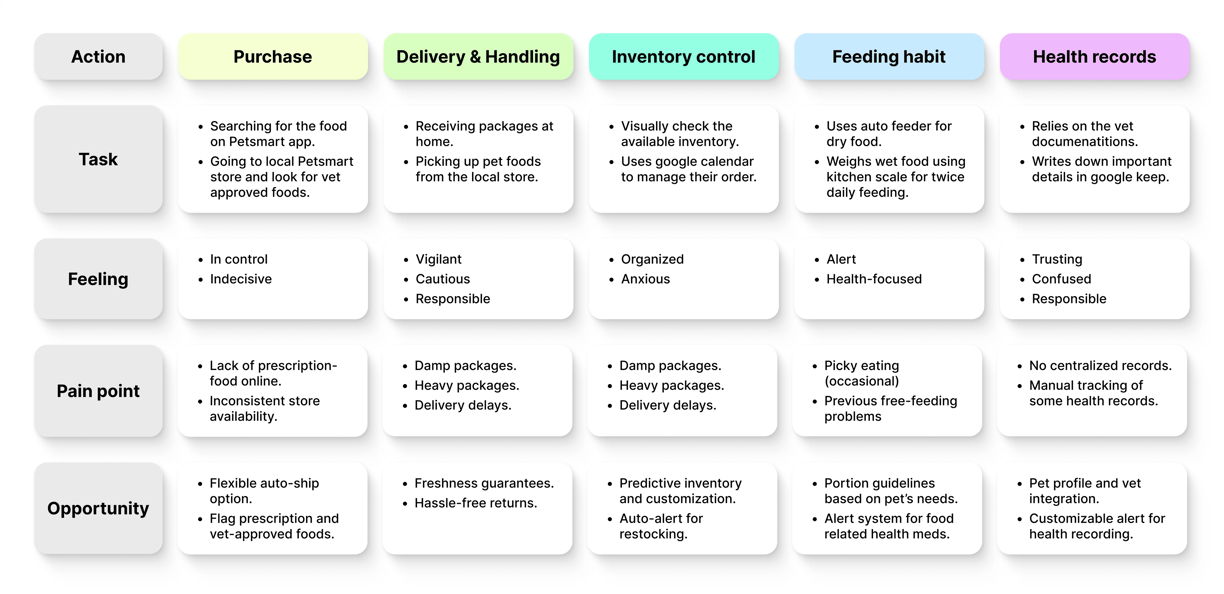

Design Process & Decisions
Through interviews and analysis, I discovered that pet owners manage purchasing and feeding in vastly different ways depending on the type of pet, number of pets, health concerns, and shopping habits. While some rely on autoship subscriptions, others prefer in-person purchases or a mix of both. Many users also struggle with overfeeding, underfeeding, inventory control, and trust in online retailers. To address these varied but overlapping needs, I established the following design goals:
Enable Personalized Feeding Guidance
Help users deliver the right food, at the right amount, based on pet type, health conditions, and vet recommendations.
Simplify Reordering and Inventory Tracking
Reduce cognitive load by providing timely reminders, inventory tracking, and smart reorder suggestions.
Support Multi-Pet Households
Allow users to manage feeding routines, inventory, and health tracking for multiple pets in one app, clearly and independently.
Build Trust through Transparency
Prioritize ingredient sourcing, prescription compatibility, and clear vet-approved options to foster user confidence.
Accommodate Diverse Shopping Preferences
Design for both online and in-store shoppers by offering flexible workflows that match user behaviors.
Built a scalable design system to future-proof the platform and streamline collaboration with developers and other designers. This system ensured consistency across the UI while supporting the addition of new features and games.
Tokens & Variables: Established foundational values for color, spacing, and typography to simplify global updates and improve maintainability.
Typography & Spacing System: Defined a clear visual hierarchy to improve readability and ensure accessible, responsive layouts.
Reusable Component Library: Created flexible components for cards, buttons, forms, and dialogs—reducing redundancy and speeding up design and development cycles.
Developer Handoff Optimization: Used Figma’s variable collections and documentation to make developer collaboration smoother and more efficient.
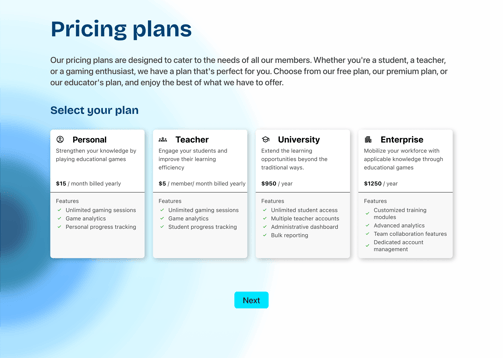

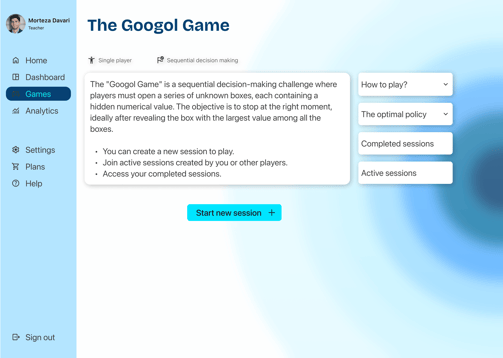

Simplified onboarding using more sign-in options (e.g., Google, Apple), clearer feedback, and progressive disclosure to ensure smoother user entry and profile completion—removing redundant steps from the original task flow.
Created a dashboard for each user that gives them a central hub to manage their games, track learning progress, and access key resources and analytics. This not only reduced navigation friction and supported deeper engagement but also ensured scalability as the platform evolves with more games and features.
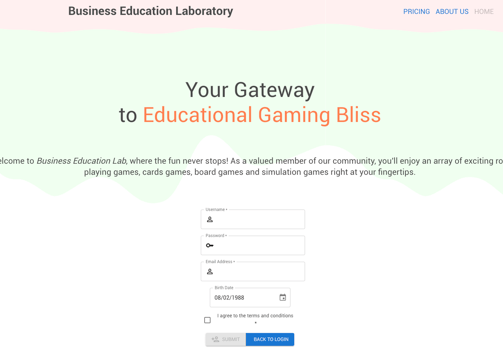



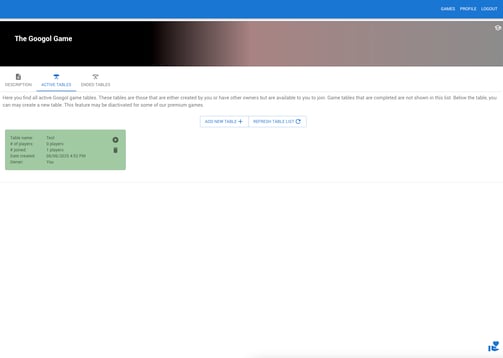

Original Design
1st version of the new design
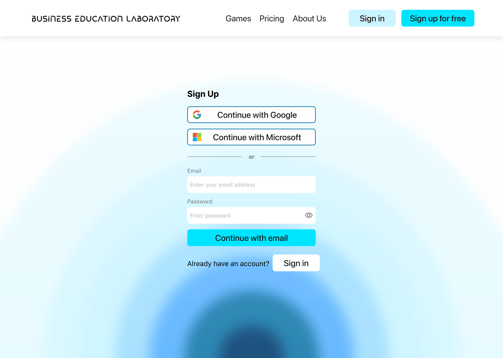

Original Design
1st version of the new design
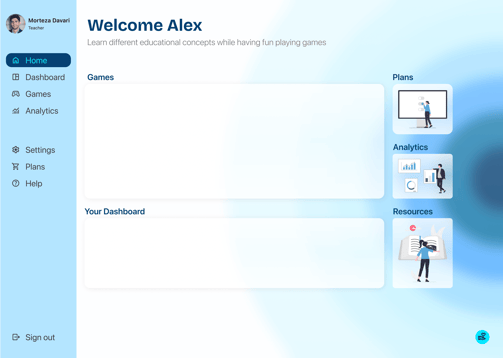

Redesigned both games to emphasize goals, instructions, progress, and real-time outcomes—reducing confusion and empowering users to make more confident decisions throughout gameplay.




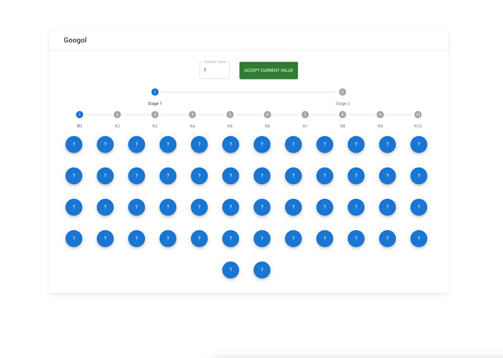

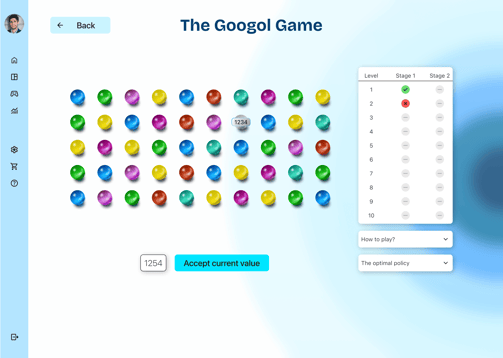

Original Design
1st version of the new design
Introduced sidebar navigation and layout grids for structure and consistency
Design System
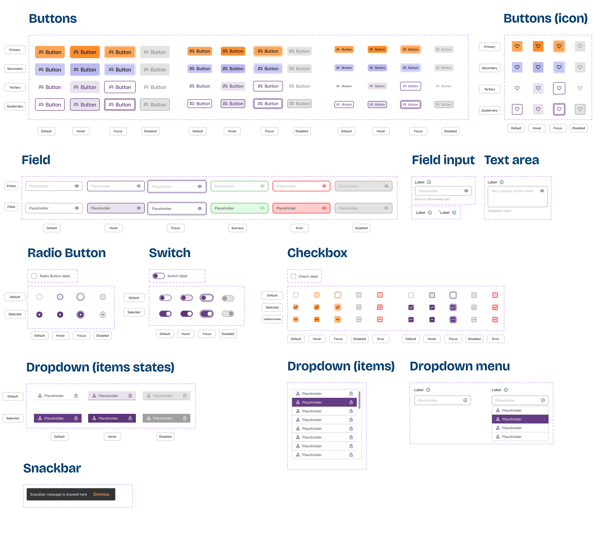

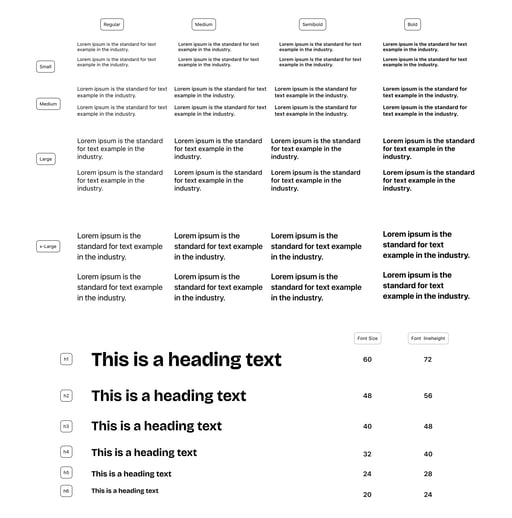

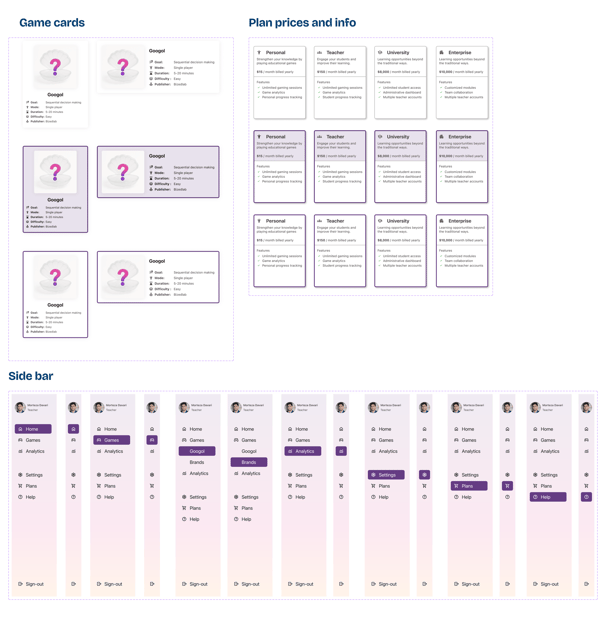

Iteration & Feedback
Throughout the design process, I regularly shared updates and prototypes with the project lead and received indirect feedback from other educators involved. Based on these sessions, I made key adjustments to:
Improve visual hierarchy.
Add clearer instructional elements.
The original blue palette was replaced with warm tones (purple, orange, soft pink) to create a more inviting, playful, and educational feel—moving away from a cold, corporate look.
I also asked a fellow UX designer to review the design — and their feedback confirmed that the revised platform felt more intuitive, organized, and classroom-ready.
Final Design
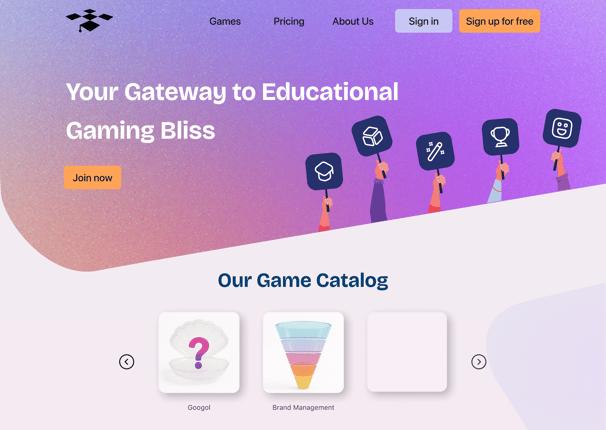

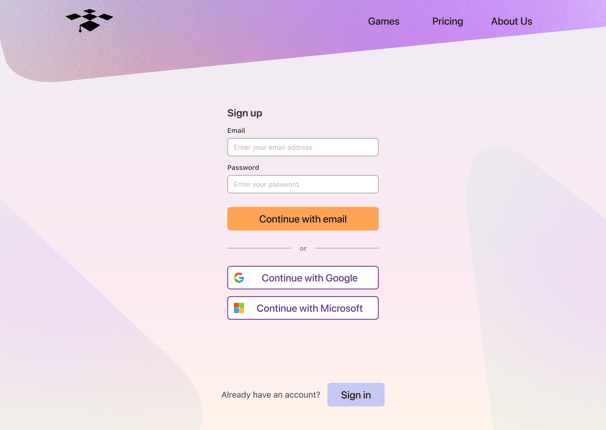

Landing page
Sign-up page
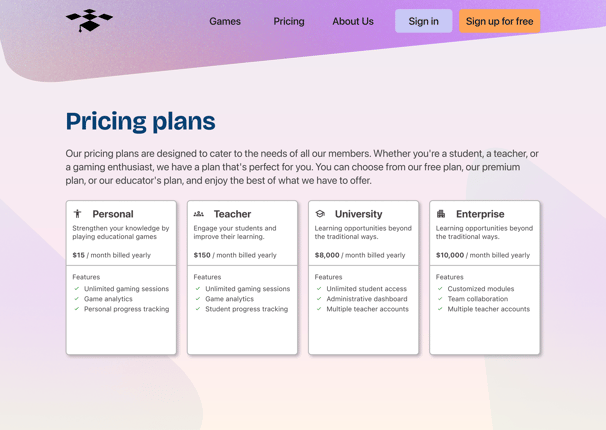

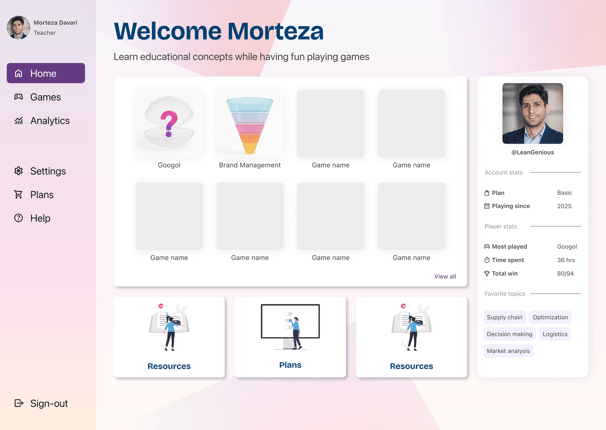

Pricing plans page
Home page
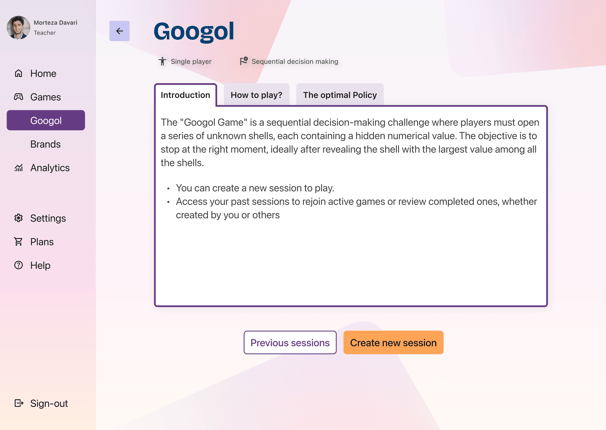

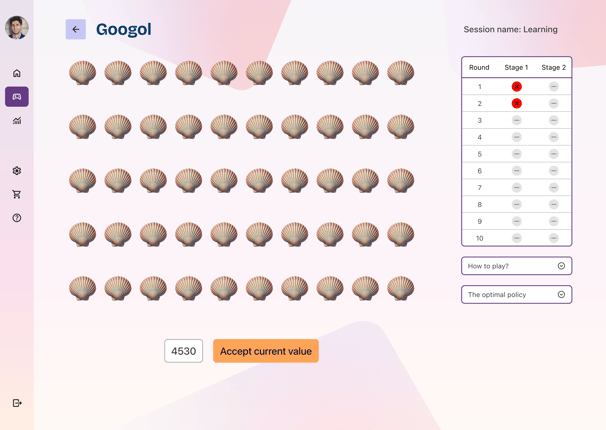

1st game home page
1st game play page
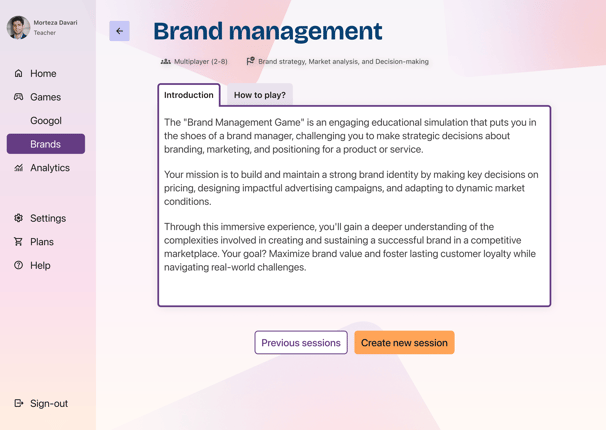

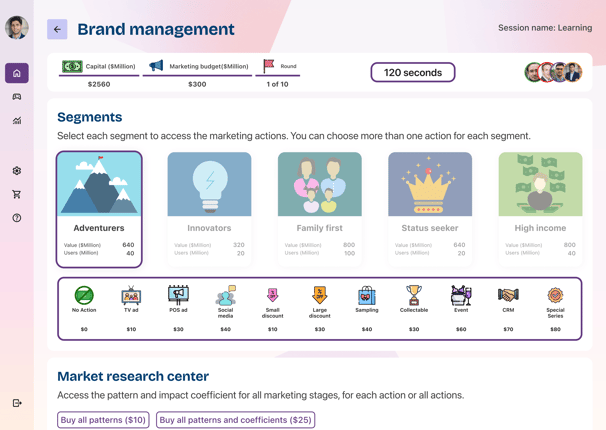

2nd game home page
2nd game play page
Outcomes & Learnings
Although the new version has not yet launched in classrooms, the redesign has already made a meaningful impact:
This project reinforced how much value a clear design system and scalable structure bring — not just for UX quality, but also for team momentum and developer alignment.


Educators felt the redesign was significantly clearer, more engaging, and more “professional”.
Stakeholder Feedback
Team Confidence
Boosted confidence in the platform’s potential to generate revenue through academic subscriptions and future B2B sales to universities and companies.
Peer Validation
UX peer review validated improvements in visual clarity, interaction design, and overall task flow efficiency.


Personal Growth
Strengthened my skills in building scalable design systems, applying tokenization best practices, and preparing dev-friendly handoffs for smoother implementation.




